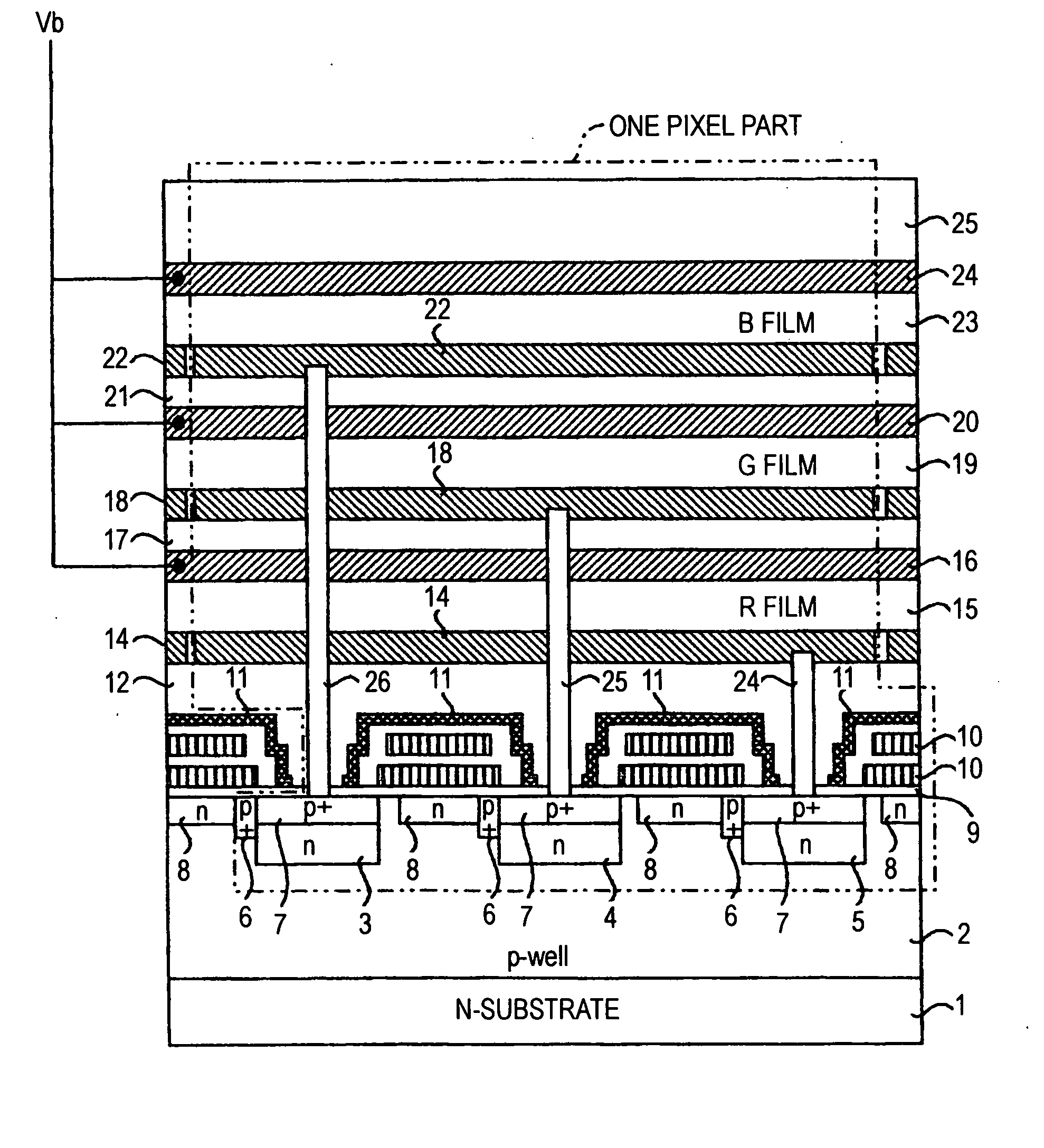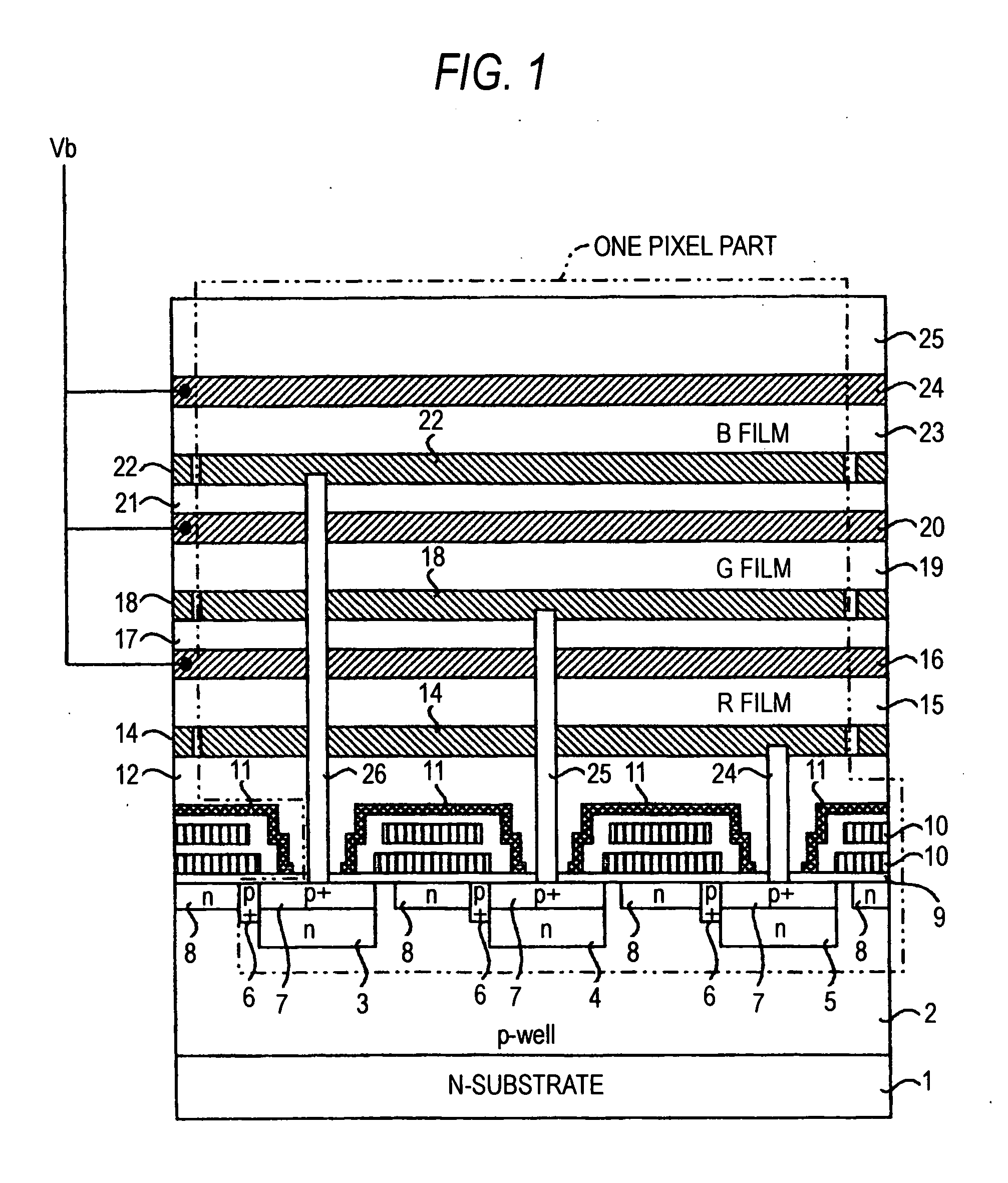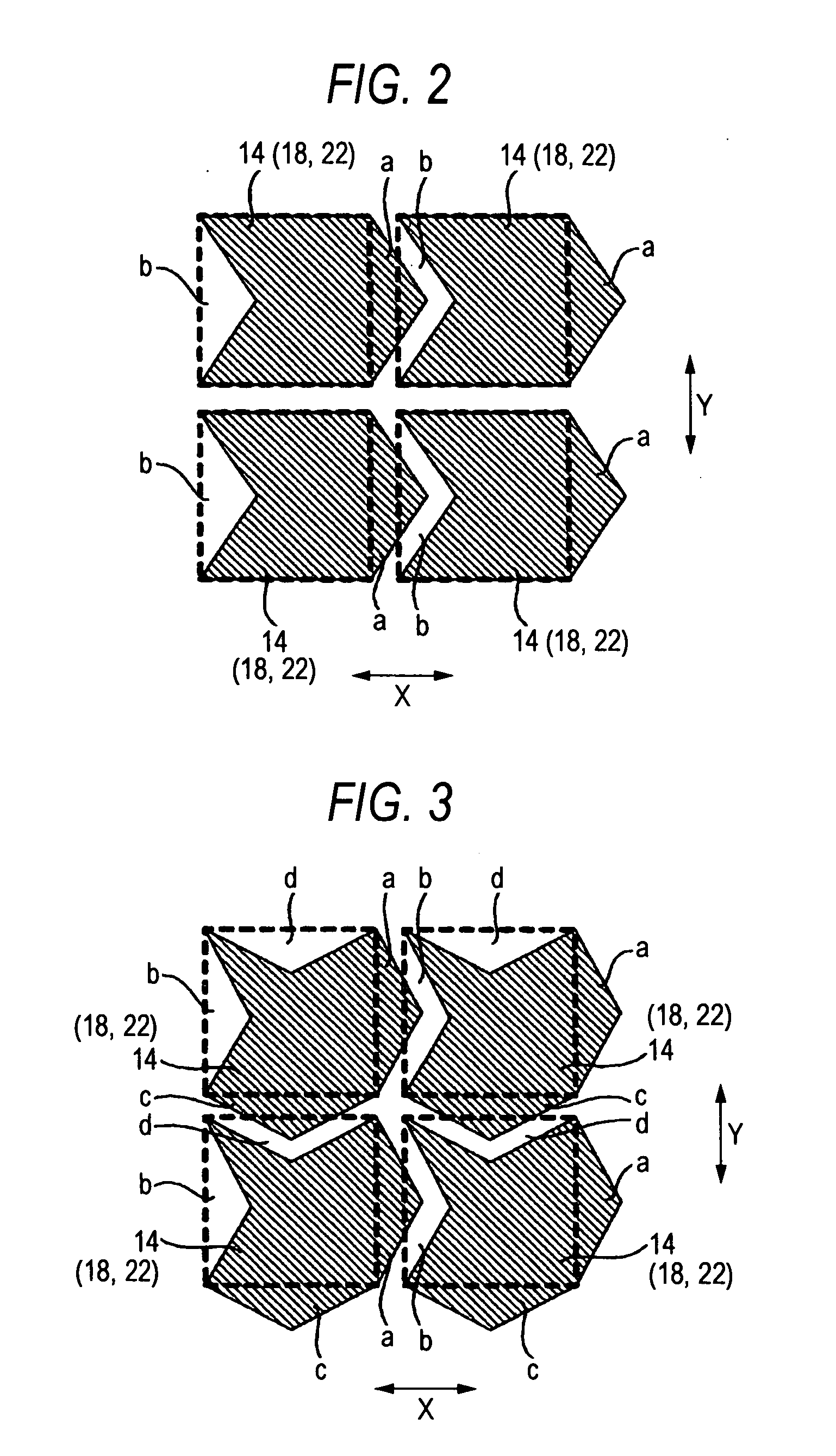Solid-state imaging device
a solid-state imaging and imaging device technology, applied in the direction of picture signal generators, television systems, radioation controlled devices, etc., can solve the problems of affecting the miniaturization of the camera, increasing the manufacturing cost of the camera, etc., and achieve the effect of suppressing aliasing and reducing cos
- Summary
- Abstract
- Description
- Claims
- Application Information
AI Technical Summary
Benefits of technology
Problems solved by technology
Method used
Image
Examples
first embodiment
[0034]FIG. 1 is a schematic sectional view showing a fundamental structure of a pixel part of a solid-state imaging device to illustrate a first exemplary embodiment of the invention. A solid-state imaging device according to the embodiment includes pixel parts shown in FIG. 1 and arranged in a plurality of rows (for example, arranged in a square lattice).
[0035] As shown in FIG. 1, an R photoelectric conversion layer 15, which detects red (R) light and generates a red-color signal charge corresponding to the light, a G photoelectric conversion layer 19, which detects green (G) light and generates a green-color signal charge corresponding to the light, and a B photoelectric conversion layer 23, which detects blue (B) light and generates a blue-color signal charge corresponding to the light, are stacked in this order above a n-type semiconductor substrate 1. In addition, the number of and the order of stacking of the respective photoelectric conversion layers are not limited thereto....
second embodiment
[0058] The fundamental structure of a solid-state imaging device to explain a second exemplary embodiment of the invention is substantially the same as that of the solid-state imaging device explained in the first embodiment. That is, with the structure, a signal charge generated in three pixel electrode layers stacked above a semiconductor substrate is once accumulated in an electric charge accumulating region provided on the semiconductor substrate and a signal corresponding to the signal charge accumulated therein is read to an outside with the use of VCCD and HCCD. However, the solid-state imaging device according to the second embodiment is structured such that at least one of the three pixel electrode layers included in one pixel part is divided into a plurality of sections, in which it is different from the first embodiment.
[0059]FIGS. 7A to 7D each is a plan view showing that pixel electrode layer included in the solid-state imaging device, by which the second embodiment of...
PUM
 Login to View More
Login to View More Abstract
Description
Claims
Application Information
 Login to View More
Login to View More - R&D
- Intellectual Property
- Life Sciences
- Materials
- Tech Scout
- Unparalleled Data Quality
- Higher Quality Content
- 60% Fewer Hallucinations
Browse by: Latest US Patents, China's latest patents, Technical Efficacy Thesaurus, Application Domain, Technology Topic, Popular Technical Reports.
© 2025 PatSnap. All rights reserved.Legal|Privacy policy|Modern Slavery Act Transparency Statement|Sitemap|About US| Contact US: help@patsnap.com



